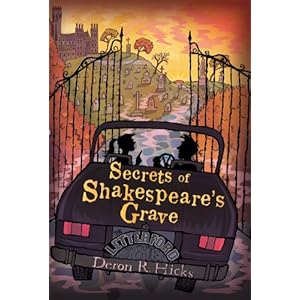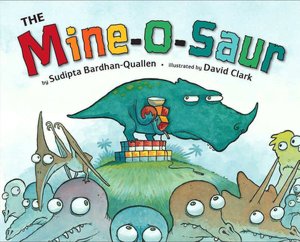Dystopian futures are all the rage in teen lit (seemingly, maybe, replacing the vampires,) and one can't help comparing this novel to
The Hunger Games triology (which I enjoyed, but this review isn't about those books, at least not mostly.)
I was recommended
Divergent by a fellow mom/tennis friend whose daughters are in college and high school, respectively. Straight out, this is a teen, not a tween, novel. But it is good.
Beatrice Prior, 16, lives in Chicago in some not-too-distant future. As an Illinois native, it's always fun to read books set in places that I'm familiar with - the idea of "the giant swamp, which some say used to be a lake, but I can't imagine it" are definitely kind of fun.
In this version of the future, people are divided into 5 different groups, the Abnegation (selfless, not to be noticed as individuals), the Erudite (wisdom solves everything), the Amity (can't we just all get along?), the Candor (the truth, and nothing but the truth) and finally the Dauntless (bravery is everything.) You are raised by your parents, who, by definition would be of the same group, until age 16, when you can make a decision to stay with your birth group, or make a change. If you make a change, you will never, ever, see your birth group again. The premise is that there was some sort of horrible global meltdown, and each group would blame its opposite (the Abnegation blame egos, the Erudite blame the uneducated, the Candor blame liars, etc.) So, to keep fighting from happening again, you live pretty much isolated in whichever group you choose, and each group has social responsibilities for the whole. If, for some reason, the group you've chosen rejects you (you choose Candor, but lie constantly,) you'll get kicked out and have to live as Factionless - basically homeless, with no societal resources at all. Not even the Amity seem to want to help these guys, so you have to choose carefully.
Beatrice and her older brother Caleb, born into Abnegation, both attend the same Choosing ceremony (they are apparently not-quite-twins, so Caleb's 16th occurred after the ceremony of the previous year.) Prior to the choice, they are tested with a virtual reality scenario, which is meant to help them make their decision. Beatrice's results, though, are, well, inconclusive, and her tester warns her NEVER to mention that result to anyone - most people are pretty clear cut in their tests. This seems odd, but since no one is ever supposed to reveal results, she doesn't worry too much about it at the time.
Beatrice is sure her brother is a shoo-in Abnegation - he never shows the "selfish tendencies" that she does. And she knows she isn't truly a selfess person (though we, as readers, may view her differently than she does herself.) At any rate, she knows she doesn't want to leave her family, exactly, but also knows that she doesn't want to particularly live with the Abnegation for the rest of her days. Confident that Caleb will stay to soothe her parents' burdens, she picks, as a kind of "the waitress is here, what am I going to order?" kind of decision, Dauntless.
Dauntless initiation turns out to be VERY hard, and the possibility certainly exists that Beatrice (now calling herself Tris as part of her reinvention) will not make it and be cast out as Factionless. There is huge physical fighting competition, first between those who have switched Factions, then overall with Dauntless-born who also want to join as adults. Much of this also involves more serum/virtual reality mind control kind of things, meant to make you face your fears. Ick.
Turns out, her brother also left Abnegation (surprise!) and went to Erudite. Their father, on Visiting Day, will have nothing to do with either of them, but Mom comes to visit, which is nice.
One of the Dauntless trainers, Four, seems to have a soft spot for Tris, and also disagrees with other trainers and leaders about what "being brave" means. They seem to be drifting into something where physical domination equals bravery, rather than bravery meaning standing up for the little guy, smart risks, and so forth. Come to find out, none of the "perfect" factions are now quite where they were when they were founded. In fact, upon (unapproved) leave visiting Caleb, Tris stumbles over a plot by a couple of the Factions to take over the others. Uh, oh.
Will she make it through initiation? What happens with the takeover plot? Are there others like her who have had "divergent" test results, and what can that mean? Is her family at all what it seems?
Without giving too much more away, this is a tightly-paced, action-packed thriller. It is NOT for the faint of heart. Dauntless leaders and initiates can be vicious - people die and are, perhaps worse, grievously injured. They use mind control/testing techniques which would scare the crap out of most adults.
The characters are well-developed, and I grew to care about them all very much. There were, perhaps, a few too many "baddies" - just in that I would forget who was which, etc., especially among the initiates. The dialog was well-done, and the world was very detailed and nicely imagined, though I guess (like in the Hunger Games, sorry, there they are again) I wish there was a bit more explanation of how this came to be in the first place. Perhaps that's a mainstay of dystopian novels that I just don't appreciate.
The philosophical questions raised by the veering of the Factions into, perhaps, extreme territory was very well done, and should make people think as they read.
Overall, this was a book that was hard to put down, wasn't completely predictable, and was very well written.
Rating: Tris and Four become somewhat intimate. Sex doesn't actually occur, but the fear of physical intimacy is used against Tris in one of her tests, so there is some discussion of the act, and also some make-out sessions do come into play. For that, and the violence and overall seriousness of the subject matter, I'd go
PG-13 on this one. As I said in the first paragraph, this is teenage material that my 10-year-olds are not yet ready for. However, if your tween has read
The Hunger Games (not seen the movie, read the book), then they'd be OK with this one.
Divergent is clearly meant as the beginning book of a trilogy. While there is a sort of climax to this particular plot, it certainly isn't the end of the story. I have not yet read the second book, so I am definitely looking at this as only its own story. (I wanted to jump right into the second, but some other things got in the way. I am definitely going to go for more, though.)











_by_Veronica_Roth_US_Hardcover_2011.jpg)









